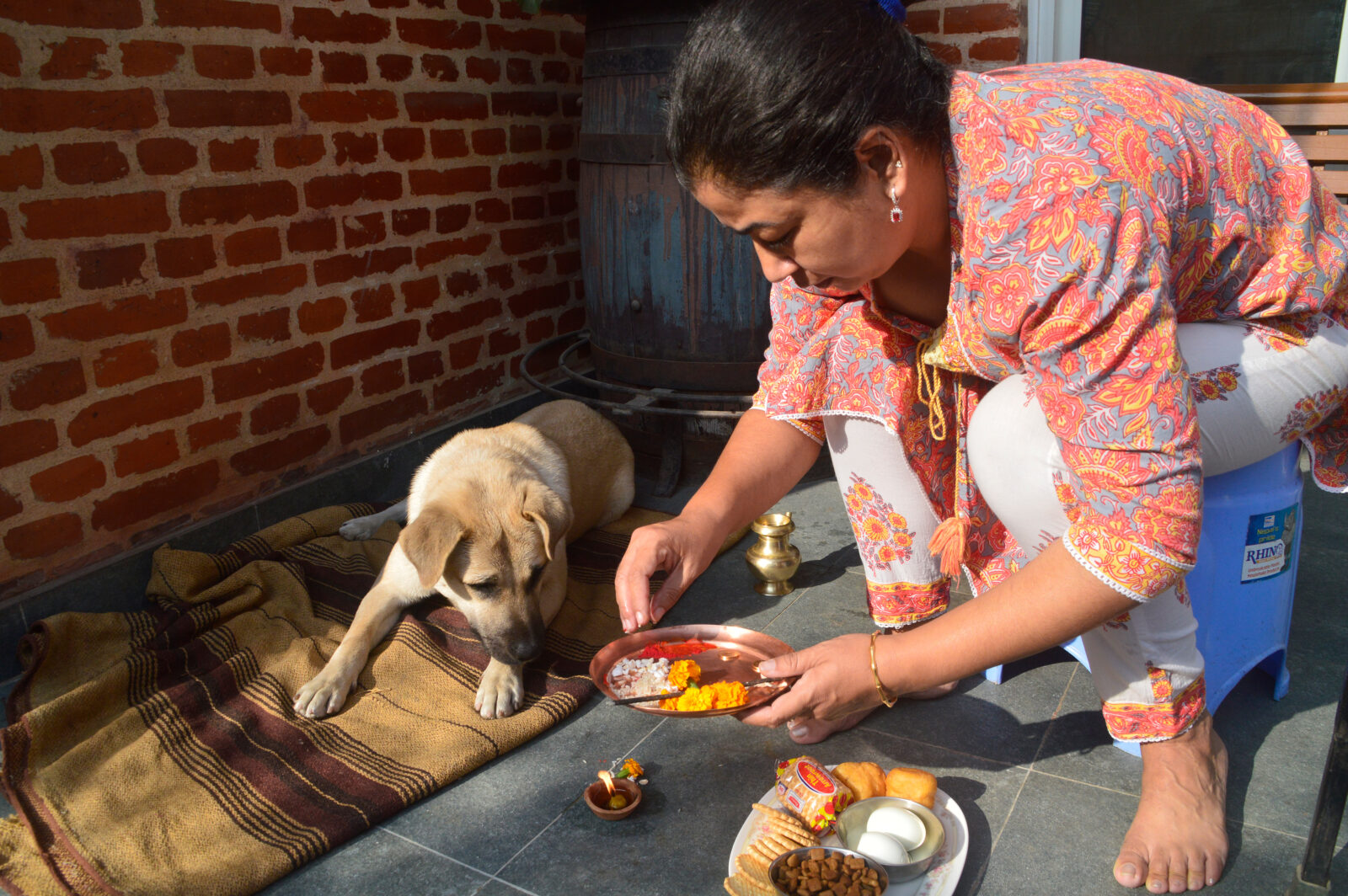
Photo by Julin Rajbhandari

Photo by Julin Rajbhandari
The five-day celebration in Nepal honors the bonds between humans and crows, dogs, cows, oxen, and siblings
The festival of Tihar heralds the start of winter in Nepal, falling in October or November each year. It is a celebration of lights filled with decorations, music, and rituals celebrating the interconnectedness of all beings. Over the course of five days, special offerings are made to the Goddess Lakshmi as well as animals with special bonds to humans, including the crow, dog, cow, and ox. The final day focuses on the relationship between brothers and sisters.
In the Terai, the southern region of Nepal, the festival is celebrated as Deepawali, and it’s known as Diwali in other parts of the world. Following the epic Ramayana story, people decorate their houses with oil lamps to commemorate Lord Rama returning with his wife, Sita, and brother, Lakshmana, to his kingdom after 14 years of exile and defeating the demon king, Ravana. Fireworks and firecrackers are set off to welcome the deities after their toilsome years away.
The five-day celebration of Tihar commences with kag tihar, when the crow is venerated for being a messenger. The sound of the crow cawing is traditionally believed to bring news, and the crow is considered to be the mount of Yama, the Lord of Death. Nepal is an agrarian society, so crows are appreciated because they feed on insects that infest and destroy crops. When crows hover around growing crops, it is considered a good sign, and a healthy harvest is forecasted. In the morning of the first day of Tihar, people offer a variety of foods to the crow to appease the bird and ask it to protect the crops and bring good news.
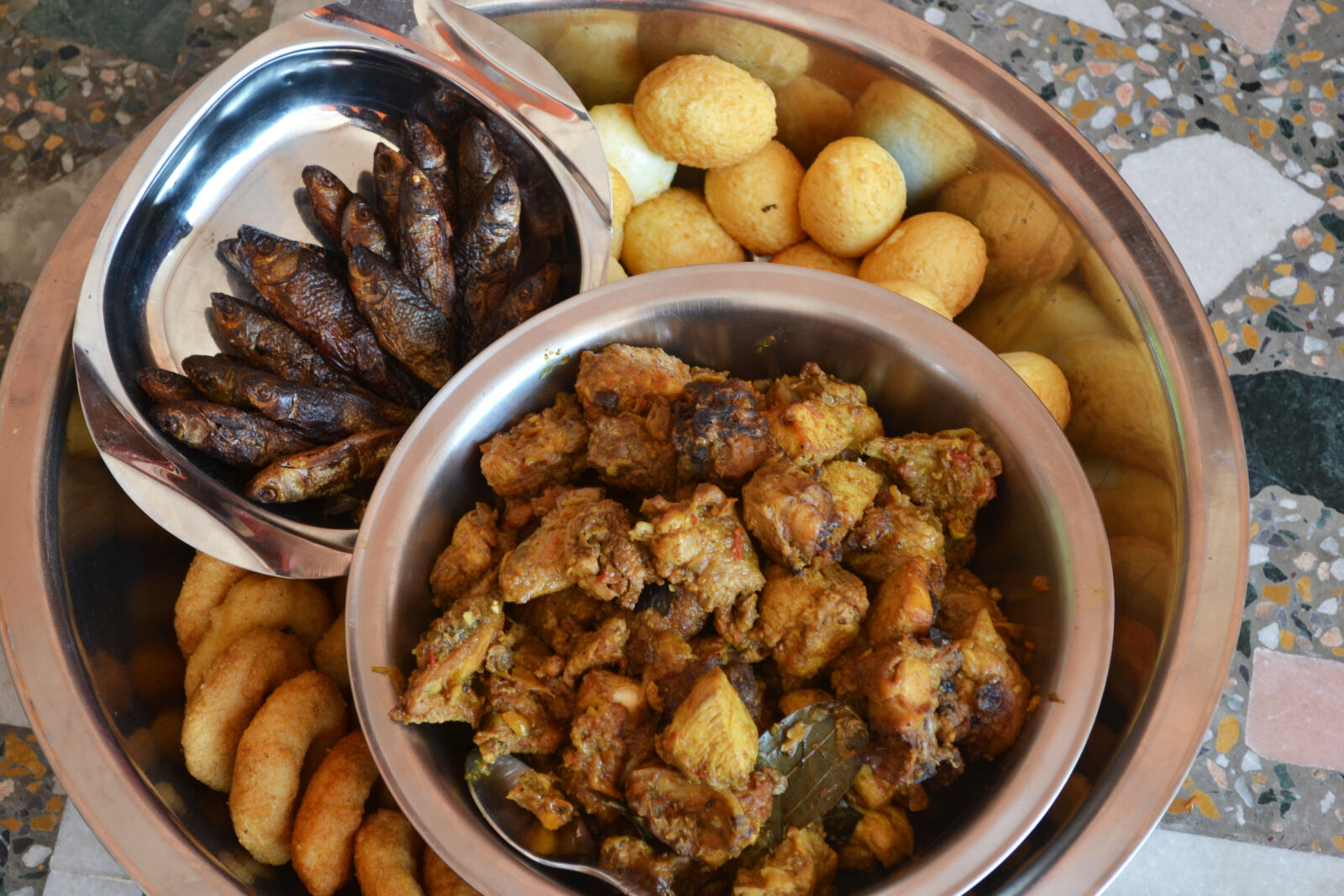
Photo by Julin Rajbhandari
The second day of Tihar, kukur tihar, celebrates the dog. Dogs have long been loyal and trusted friends and companions to humans and appreciated for their bravery. People have a special bond with dogs because they are smart, intelligent beings that support many activities to ease our lives.
On this day, people pay respect to their dogs by decorating them with flower garlands, applying red tika marks on their foreheads, and offering them a special treat. Street dogs are provided equal reverence. In Hindu religious texts the dog is associated with Lord Bhairava and Yama. Bhairava and his dog are believed to link the world of the dead with the living. In the epic Mahabharata, Yama takes the form of a dog and accompanies the Pandava brothers on their final journey to heaven.
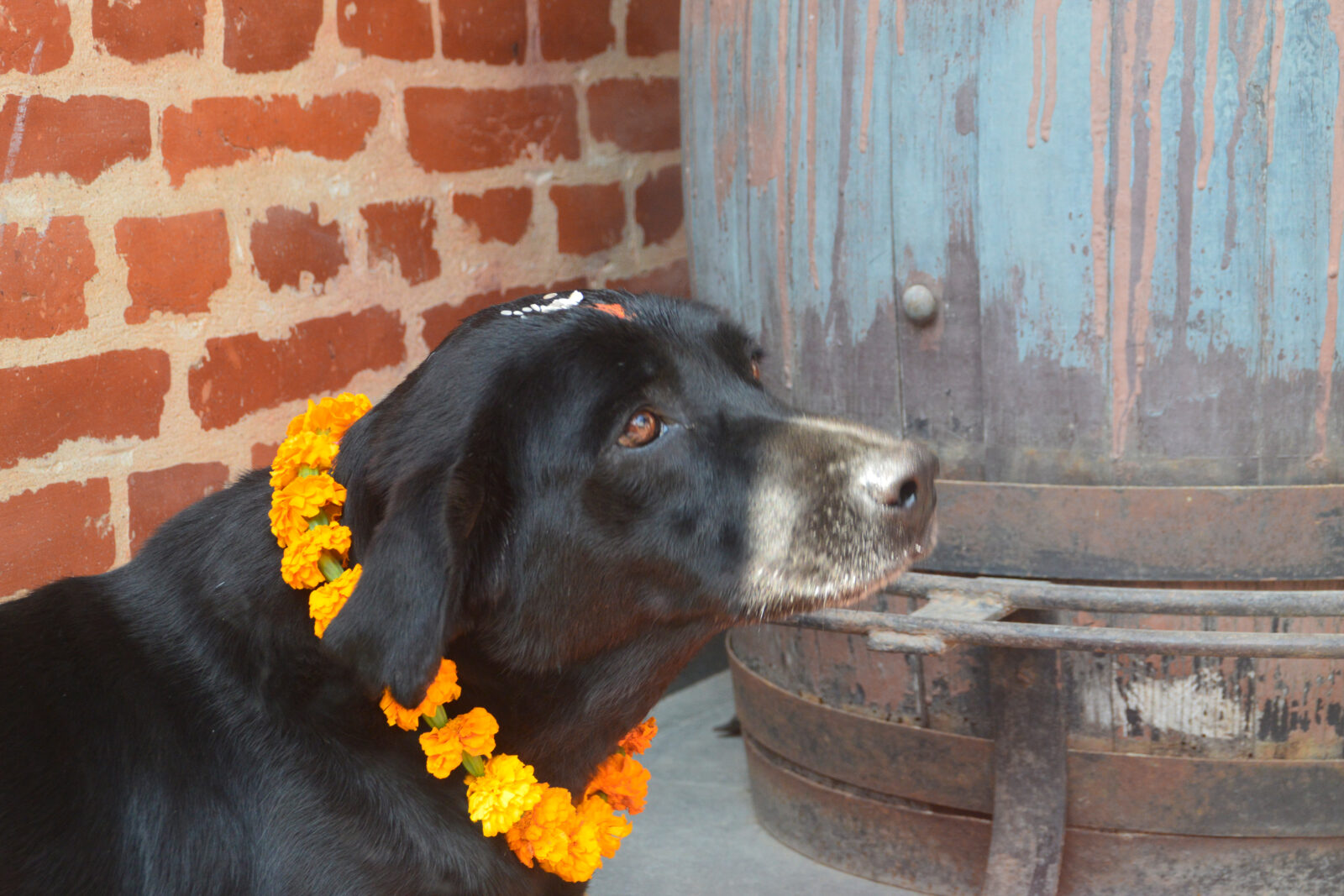
Photo by Julin Rajbhandari
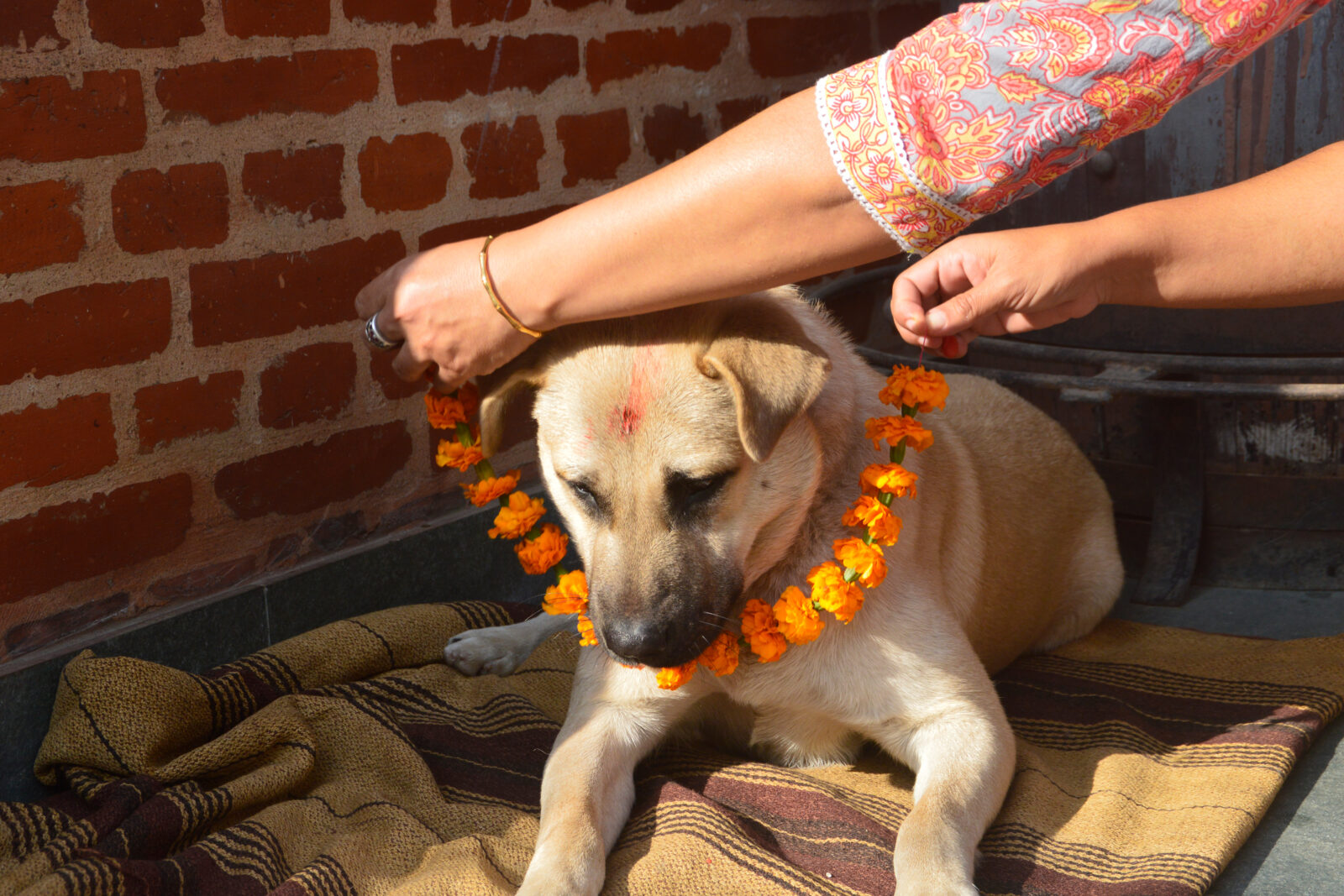
Photo by Julin Rajbhandari
The third day begins with the worship of the cow in the morning. Hindus consider the cow sacred, and humans have long relied on cows for milk to make dairy products and for dung as a source of fuel, fertilizer, and plaster for clay bricks. For this reason, cows are regarded as “caretakers” or having a maternal role.
In the evening, people worship Lakshmi, the goddess of prosperity, in the hopes she will bless the worshiper and bring fortune. People clean their houses and decorate with marigold flower garlands. They light oil lamps, for it is believed that the goddess visits clean and well-decorated houses at dusk. Traditional food like selroti, anrasa, and other sweets are prepared as offerings to the goddess. Images of Lakshmi, whether block-printed, hand-painted, or machine-printed paper posters, are purchased beforehand and pasted in safes, lockers, or other spaces where monetary transactions take place. The ritual begins by lighting oil lamps and is followed by chanting mantras and making offerings to the goddess of wealth.
On the evening of the third day is also bhailo, when groups of girls from the neighborhood visit local houses, singing songs and performing dances to add to the entertainment and merry making of the festival. These groups are rewarded with food and money, and they leave singing a traditional song asking the gods to bless the family with prosperity and good health.
On the fourth day is govardhan puja, when the ox is venerated for its service to humankind. With the development of agriculture, humans transitioned from being hunters and gatherers to settling in one place. The bull played an important part in ploughing the land and facilitating agricultural activities. They also pulled carts, the only form of land transport in ancient days.
In the evening young boys from the neighborhood take their turn to visit houses, sing songs, and dance to add to the merriment. Like the girls, they are rewarded with treats and money, and they leave by blessing the household with traditional songs. This performance is called deusi.
This day also marks the beginning of a new year for the Newar community, who are believed to be the original inhabitants of the Kathmandu Valley, traditionally referred to as Nepal Mandala. This year, 2025, brings the onset of 1146 in the Nepal Samvat calendar, and is celebrated with fanfare, bike rallies, and traditional music.
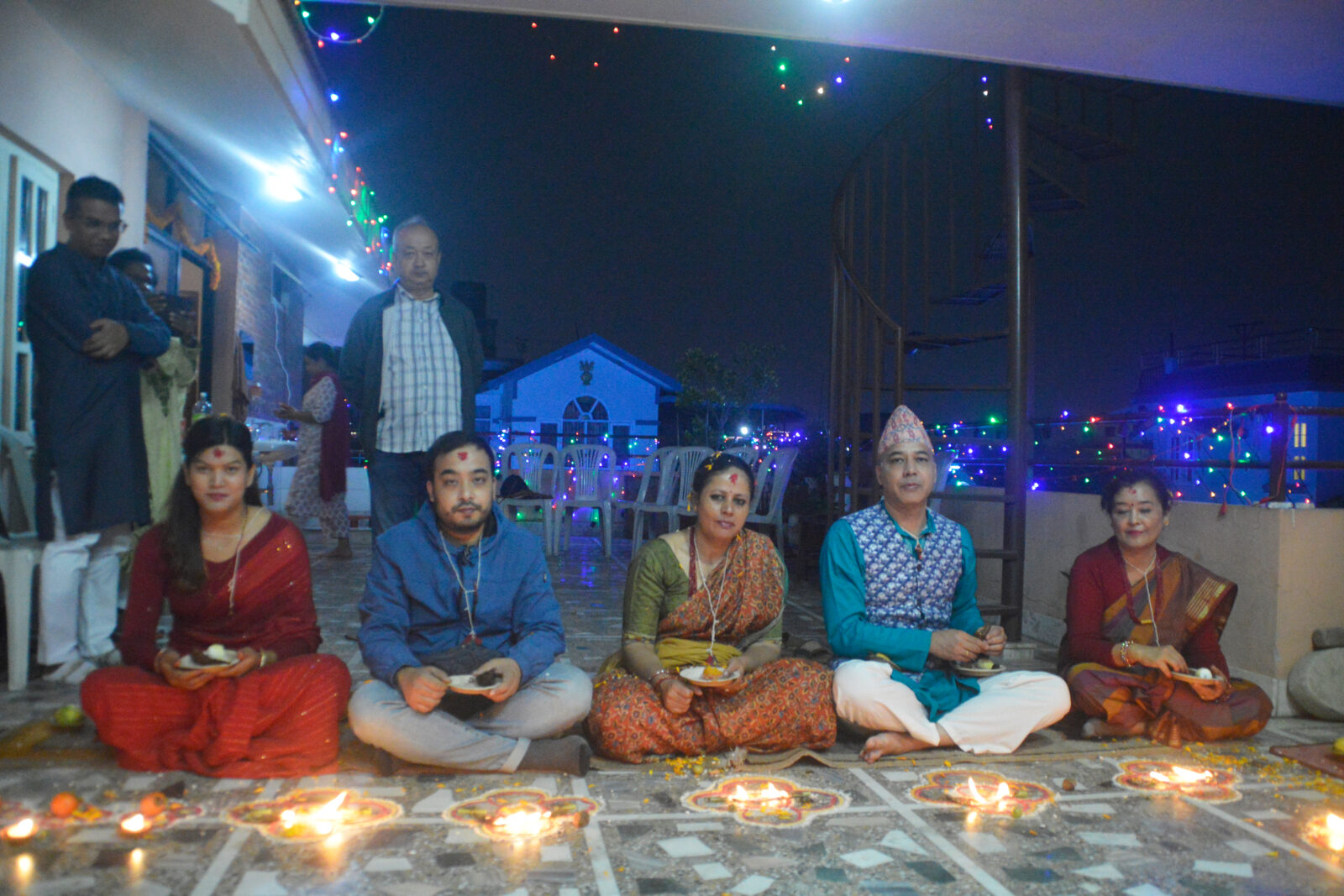
Photo by Julin Rajbhandari
A special ritual of self-cleansing called mahapuja, or “worship of the self,” takes place in the evening. A special mandala is made on the ground with colorful rice flour for every person, both physically present and absent. Each person sits on the floor in front of their mandala, which is a symbolic representation of the universe and serves as a receptacle for the gods and universal forces. Over the course of the ritual, the mandala is decorated with flowers and other offerings, and lit with oil wicks. This ceremony involves cleansing one’s mistakes and transgressions from the previous year and asking the gods for longevity and blessings for a prosperous new year ahead. The ritual ends with a hearty feast of traditional Newar food and the most relished local alcohol (alia).
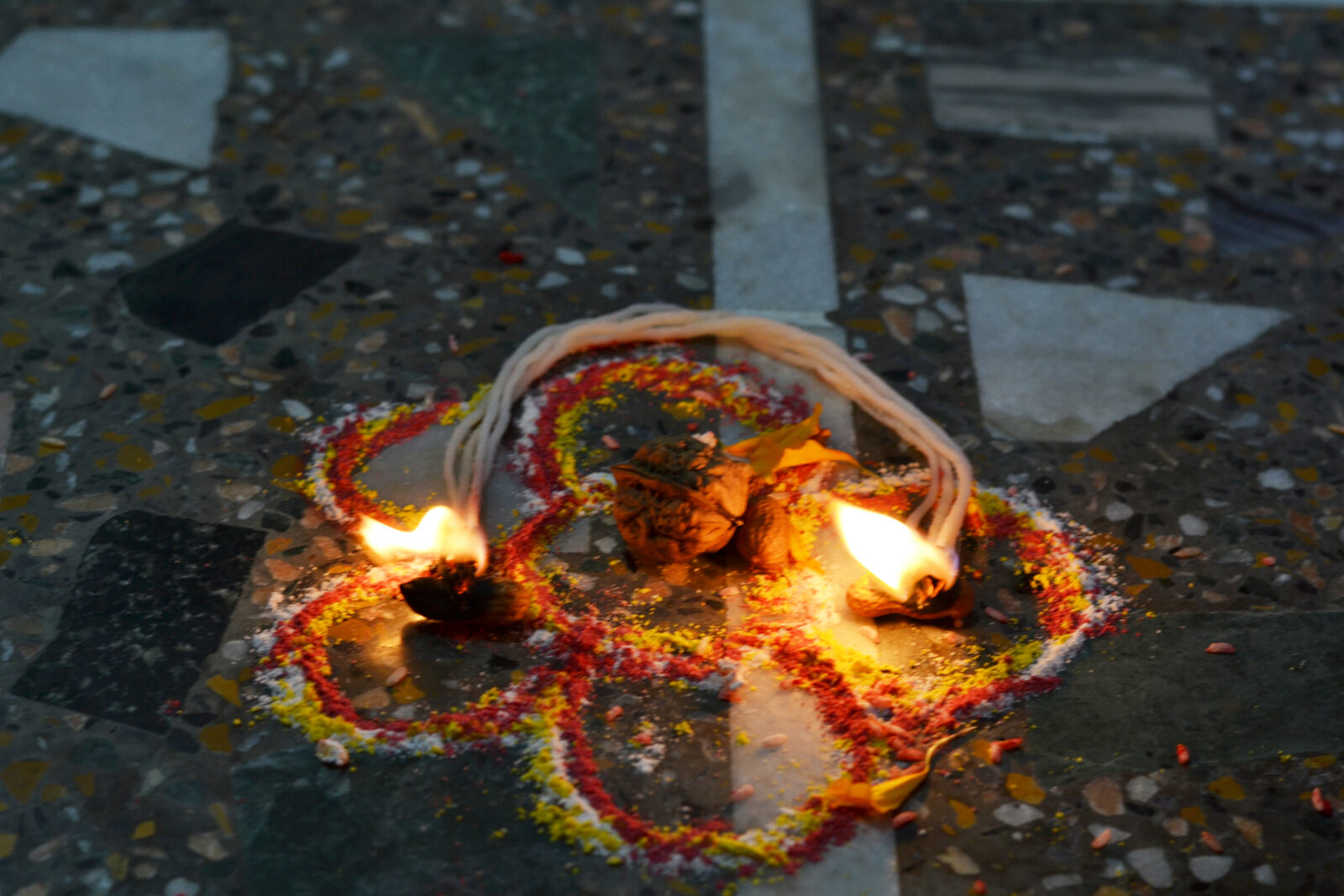
Photo by Julin Rajbhandari
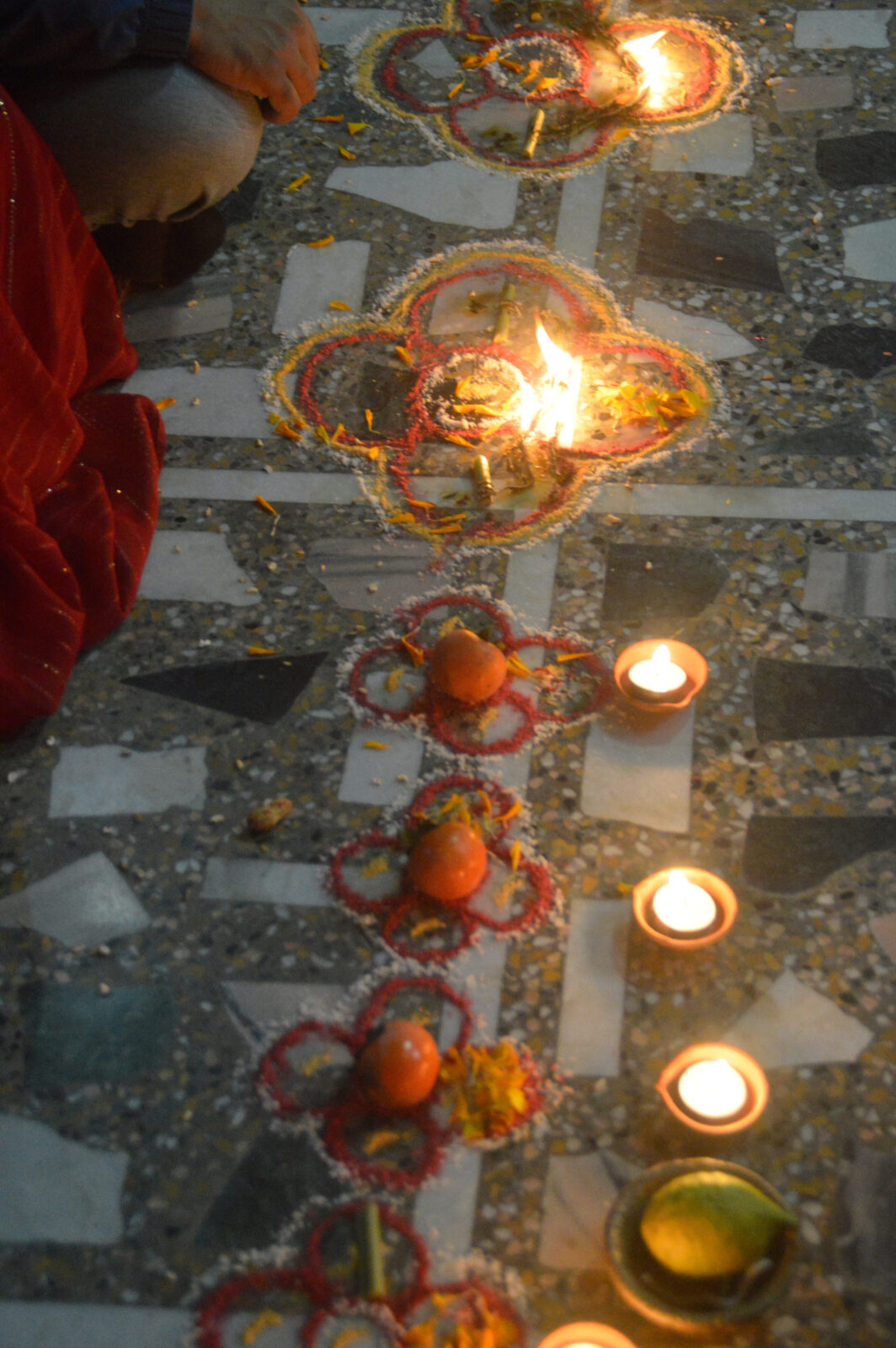
Photo by Julin Rajbhandari
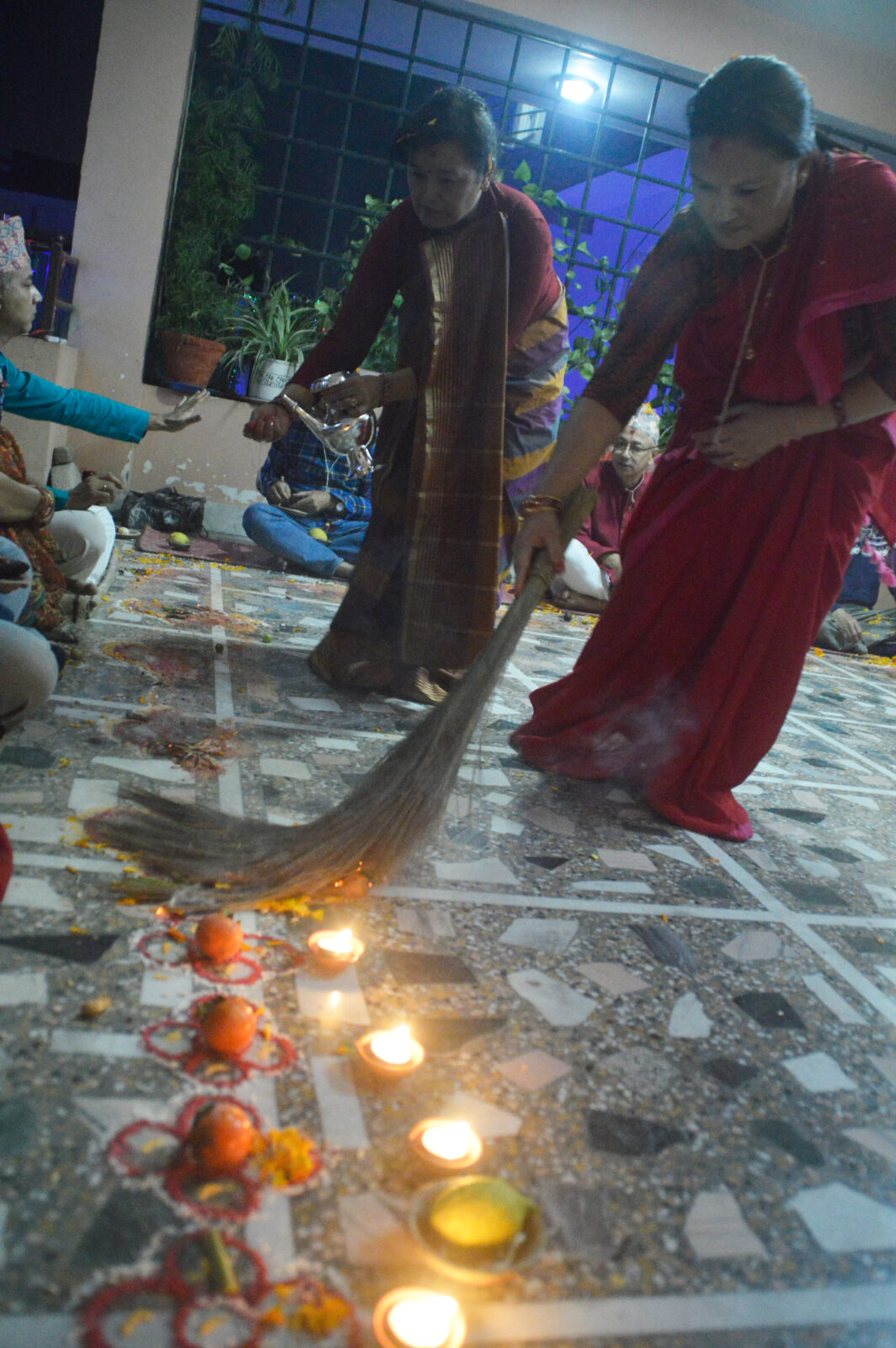
Photo by Julin Rajbhandari
The celebration of Tihar culminates with bhai tika, when brothers and sisters celebrate each other. Sisters apply the tika mark on their brothers’ foreheads, offer sweets and other festive goodies, and bless them. In return the brothers give special gifts to the sisters, and they each pray for the prosperity and well-being of the other. Those who do not have a sibling go to Rani Pokhari, a pond in Kathamandu, to worship the Matrikeshwor Mahadev, a temple dedicated to Lord Shiva.
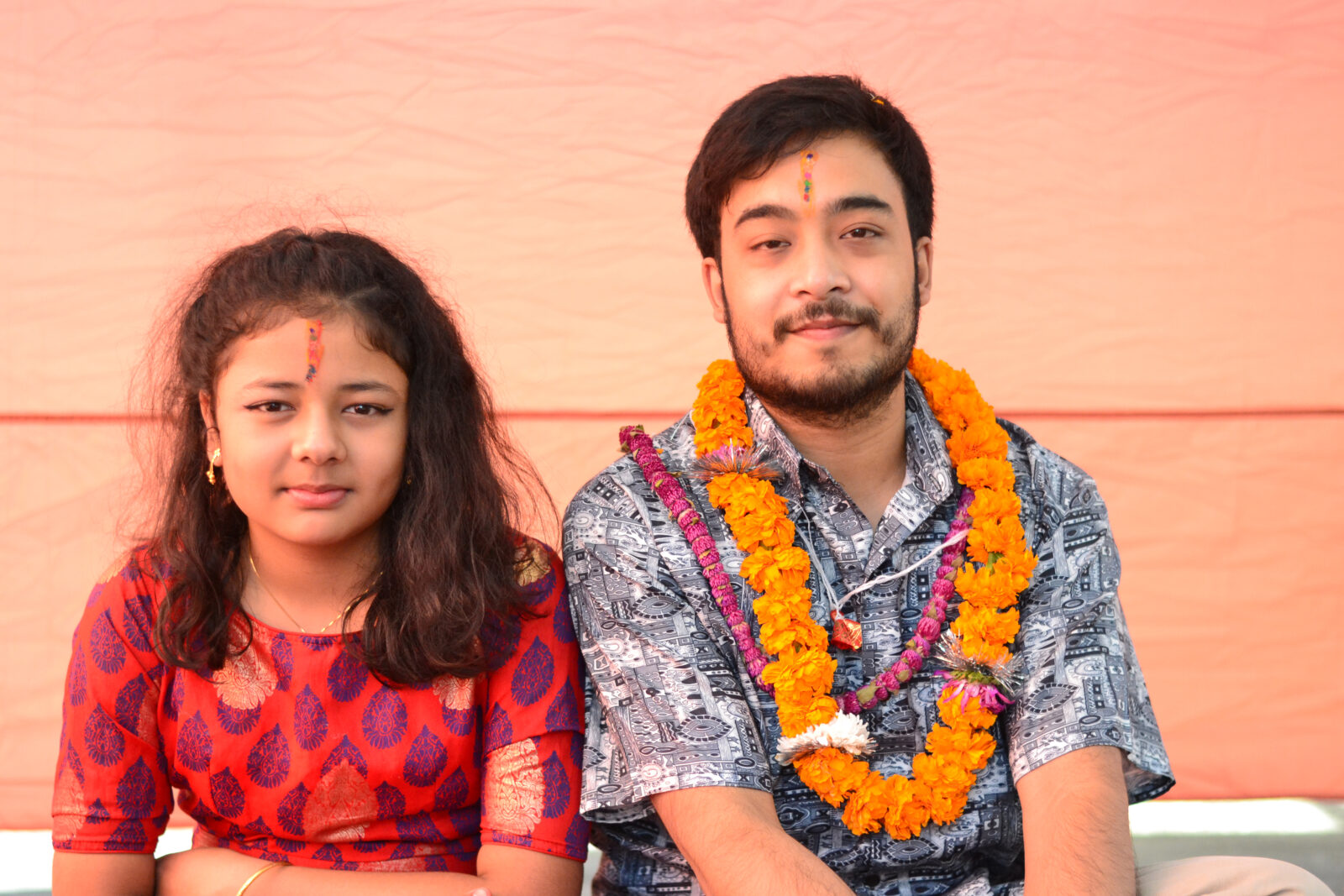
Photo by Julin Rajbhandari
The festival of Tihar emphasizes the interdependence of humans with other sentient beings and nurtures the balance of ecology, with an exchange and appreciation of feelings, goodwill, and gifts. Such celebrations highlight the importance of cultivating a harmonious coexistence to help maintain a healthy religious and social life.
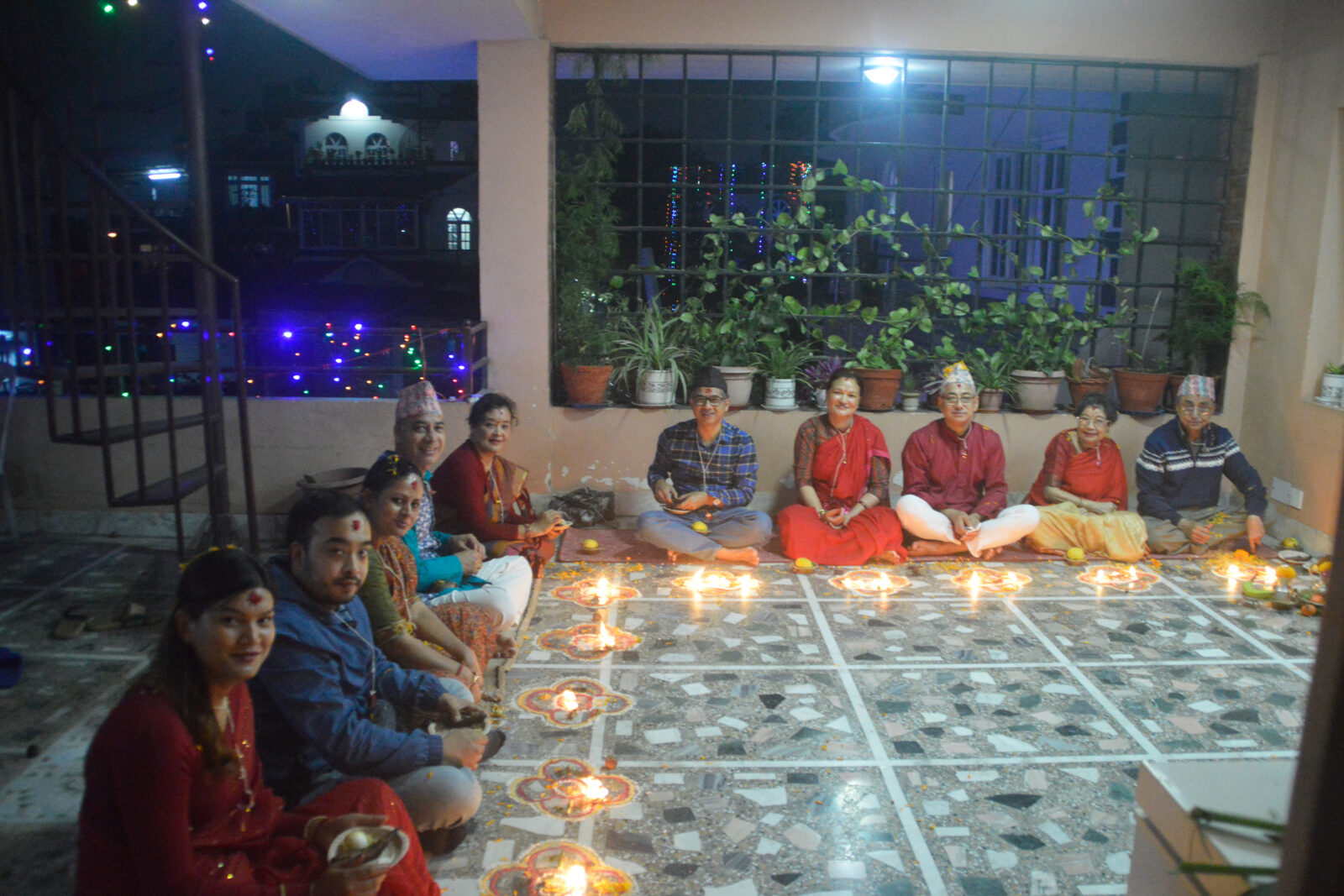
Photo by Julin Rajbhandari
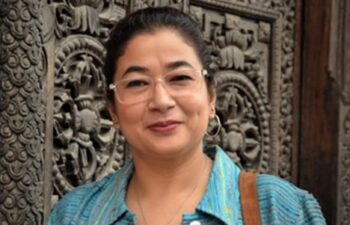
Swosti Rajbhandari Kayastha is a scholar of Nepali art and culture. She serves as a lecturer of museum studies and Buddhist art history of Nepal. She also works as a curator at Nepal Art Council and writes the column “Heritage Tale” in ECS Nepal.
Get the latest news and stories from the Rubin, plus occasional information on how to support our work.